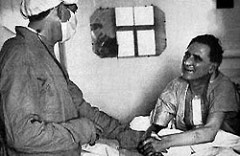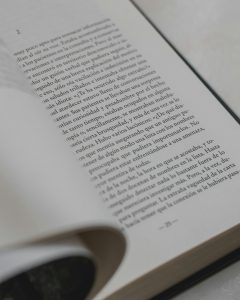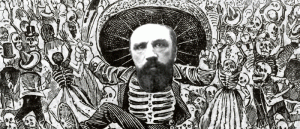“Life to me is so very valuable that I doubt if a minimum time limit can be set on it.” –Christiaan Barnaard1
What does the beat of your heart sound like? It sounds pretty much like any other heart, right? What if this heart was not your own? What if this heart had belonged to someone else before you? The sound isn’t so ordinary anymore now is it?

On December 2, 1967, twenty-five year old Denise Darvall and her mother were crossing the street trying to get to a well-known bakery. The mother and daughter were making their way to the car with the pastry in hand when the unthinkable happened. A drunk driver, paying no attention to his surroundings and running a red light, sped through the crosswalk, taking out the two ladies in his path. Denise’s mother was killed on impact, and upon arrival at the hospital, Denise would be declared brain dead.2 Her father made the decision on her behalf to save the life of another individual and give someone else another chance to live. Denise and her mother fell victim to this reckless act and ultimately lost their lives. Denise had now past away, but her death would not be in vain. Though she may not have known, Denise would become a part of medical science history.
Dr. Christiaan Barnard was born in the year 1922, and received his education at the University of Cape Town in 1946. After receiving the training necessary to become a surgeon, Christiaan helped develop an open-heart surgery program at the hospital where he worked, Grute Schuur Hospital.3 He had also had help from Stanford University to perfect his surgical techniques.4 Christiaan Barnard had numerous accomplishments under his belt already, but there was still some work that had to be done. Dr. Barnard wanted to change the world and do the unthinkable. With patients Louis Washanky and Denise Darvall, he’d be able to do just that.

Fifty-three year old Louis Washanky was a grocer in the city of Cape Town, who had been afflicted with serious heart problems. He was quite the odd choice to be the first patient for this procedure, considering he had a history of smoking and he was also diabetic.5 Additionally, he had a massive growth on his leg that would require draining and would also be another location where infection would take place. Louis was far from being the ideal choice for a first heart transplant recipient, but nonetheless, Dr. Barnard saw something in Louis and knew that he was to be the one who would receive the new heart and get a second chance at life. Denise had been declared brain dead, but she had also been deemed an ideal donor for the impending surgery for Louis. Therefore, since she was seen as selected donor, her organs could not be allowed to become deoxygenated. So her body temperature was regulated and she was kept on a ventilator so that oxygen would still be provided to her organs to keep them functioning. Denise had the blood type O and Louis had the blood type A. This meant that Denise was viewed as a “universal” blood donor and therefore Louis could receive her blood.6 However, just because the blood types were compatible did not mean that their white blood cell types were compatible. Due to the time sensitive procedure, there was no time to determine whether Louis’s body would reject the new organ. The doctors could only move forward with the procedure and hope for the best. Louis was in the room right next to Denise’s, and once the okay was given, the historic surgery was ready to begin.
Shortly after two in the morning on December 3, 1967, the surgery was ready to take place. Denise’s body had been properly prepped for the procedure and Louis had been anesthetized. Denise’s heart had been clamped and was ready for removal and Louis’s heart had been clamped so that all the blood in his body was being directed everywhere except to his now failing heart. Once Denise’s heart was removed, it was directly put on ice and was being pumped with blood so as to keep the organ alive, whereas Louis’s heart was to never beat again. The surgeons carefully moved the donor heart into its new home and stitched the organ in like a puzzle piece. They carefully attached the aorta, the pulmonary artery, and each and every vein. The delicate procedure took an estimated four hours to complete. The moment of truth would come when it was time for the heart to beat for the first time. All hands were off the body and Dr. Barnard would shock Louis’s chest to see if the risky surgery was too good to be true. Dr. Barnard shocked Louis’s chest, and sure enough…lub-DUB, the heart began beating on its now.7

Louis had survived the surgery and he now had a properly functioning heart, but he wasn’t out of the woods yet. He had won half the battle, but their still were no guarantees as far as Louis’s outcome would go. Now the hurdle that had to be crossed was to see if Louis would continue to survive and see if his body would handle the sudden, drastic change of a new organ. Upon Louis’s first time waking up, he appeared to be doing fine and feeling good. He was smiling and was very grateful for the second chance at life that he had been given. Dr. Barnard was overjoyed to see his first patient doing so well, but he knew that there was still a long way to go. In the coming days, Louis had seemed to be making progress and continuing to heal more each day. About two weeks after the surgery, however, Louis had taken a turn for the worse. His caretakers were uncertain as to what caused the sudden decline in health. They deemed the issue to be attributed to their worst fear: organ rejection. The caretakers decided to increase the treatment for organ rejection, which ultimately would cause Louis to become more immuno-compromised. This means that his immune system would be lowered to the point where his body could no longer fight off infection or defend itself from any potential invaders of his body. While the intentions of this action were for the benefit of Louis, the step taken to help him actually ended up being detrimental to his health. The increase of medication actually worsened his condition rather than help it. Due to his compromised immune system, Louis continued to deteriorate and he ended up contracting pneumonia, from which he unfortunately could not recover. A little over two weeks after receiving his new heart, Louis Washanky passed away due to the complications following his surgery, combined with the deadly pneumonia.8
Though Louis unfortunately passed away, his operation was still considered a success. The procedure was something that had never been done before and Dr. Barnard’s patient lived for over two weeks with the new heart. The operation would set the stage for future heart transplants to take place with even more of a success rate. From Louis’s surgery and post-op conditions, healthcare providers could learn from the operation both what went right and what went wrong. That way they could provide the best outcome possible for their patients. Dr. Barnard took a chance with this new procedure, but he opened the doors for future surgeons and patients alike to have this second chance like Louis Washanky had been given. Dr. Barnard took a chance on the procedure, and by doing so, he also helped other surgeons have the bravery to take a chance on new, life-saving surgeries as well. Of course, Denise Darvall cannot be forgotten in all of this. Though what happened to her was tragic, she helped to give Louis Washanky another two and a half weeks of life that he may not have had without her help. Her contribution can never be forgotten since the breakthrough surgery would not have been possible without her. Denise quite literally gave the most loving gift of life to Louis Washanky straight from the heart. Although bittersweet, due to the story of these three individuals and all others involved, the history of medicine was changed, and medicine today has advanced due to the sacrifices and chances taken by these brave people.
- Christiaan Barnard, Heart Attack: You Don’t Have to Die (New York: Delacorte Press, 1971), 5. ↵
- James Brent-Styan, “PART 2: First Heart Transplant-‘Denise never saw the motor vehicle coming,’” news24. Accessed November 8, 2018. https://www.news24.com/Books/part-2-first-heart-transplant-denise-never-saw-the-motor-vehicle-coming-20171203. ↵
- John Brink and Johannis Hassoulas, “The first human heart transplant and further advances in cardiac transplantation at Groote Schuur Hospital and the University of Cape Town,” Cardiovascular Journal of Africa Vol. 20(1) (2009): 31-35. ↵
- “A Brief History of Heart Transplantation,” Columbia Doctors, accessed September 9, 2018. http://columbiasurgery.org/heart-transplant/brief-history-heart-transplantation. ↵
- John Brink and Johannis Hassoulas, “The first human heart transplant and further advances in cardiac transplantation at Groote Schuur Hospital and the University of Cape Town,” Cardiovascular Journal of Africa Vol. 20(1) (2009): 31-35. ↵
- Lily Rothman, “50 Years Ago This Week: Inside the First Heart Transplant,” Time, December 11, 2017. Accessed September 9, 2018. http://time.com/5050803/1967-heart-transplant/. ↵
- Lily Rothman, “50 Years Ago This Week: Inside the First Heart Transplant,” Time, December 11, 2017. Accessed September 9, 2018. http://time.com/5050803/1967-heart-transplant/. ↵
- John Brink and Johannis Hassoulas, “The first human heart transplant and further advances in cardiac transplantation at Groote Schuur Hospital and the University of Cape Town,” Cardiovascular Journal of Africa Vol. 20(1) (2009): 31-35. ↵



58 comments
Joshua Garza
This article is great and is about a pretty cool subject to learn about. This is definitely about a significantly important moment in the history of the world’s medical field and is cool to now know the story behind one of the biggest progressions in our medical field. Great job on the article, I genuinely learned a lot.
Averie Mendez
Although the death of the donor was so tragic, it’s mind blowing to think that Bernard had no way of knowing if Louis would survive the transplant, but went on with it anyways. It goes to show that, without risk taking, something as crucial and important to our society today as heart transplants would be unheard of. Even though Louis didn’t survive, the steps that these men took towards modern medical practices changed the world and saved thousands of other lives since then.
Mariah Garcia
Medicine has always been a keen interest of me. The author does a terrific job of painting a scene for the first heart transplant, and it is interesting to read of just how this came to be. Like, imagine how much they may have learned from this first excursion. Even though the patient did not survive, the knowledge that was gained from this most likely helped to revolutionize the field for years beyond.
Rosario Moreno
Wow, I always wondered what the first heart transplant was like. Poor Denise and her mother, yet without Denise’s blood type this procedure may have never taken place. Then imagine the repercussions. I think if Louis just died on the table this future transplants would have been less likely to have happened. Great article.
Sharriah Martinez
This article was a great read. I wish there would have been a little bit more information on how his heart problems arose, symptoms. I am very fascinated with medical reads, I work for a gynecologist and learning more and more about the human body is fascinating to me. It is sad to know that Louis did not survive but it allowed us to grow and understand what was wrong and what could be worked on. My grandfather needed a heart transplant and survived it. It is crazy to know that this surgery was what allowed my grandfather to be alive today.
Krystal Rodriguez
I love medical stories and hearing how medicine evolves. This was so recent too i could have never imagined what year it was performed in. Its sad that the donor had to die in such a tragic way and that her mom had to die with her but she did give someone life even if it was just for a little while. I think it was odd that they gave her heart to someone who smokes and has diabetes when im sure healthier people could have used that hear and maybe had a different result.
Diamond Davidson
This story is really good, but I think it would’ve been better is if there was a little more information. The man, Louis Washanky, I wanted to know when he started to experience heart problems. However, the structure of your story is well-written and flows very well. I also like the pictures you used to help others understand the story you’re trying to tell.
Makenzie Santana
It was so great reading this article, I have always been obsessed with life changing medicine and surgery and this article really gave me the satisfaction about reading the very first surgical heart transplant. It is devastating to know that Louis had not survived, but it gave other people a chance to live. This was such a ground breaking event when it came to medicine and has caused the saving of thousands of lives today.
Samantha Ruvalcaba
I really enjoyed how the article was sequenced. It was unfortunate to hear the circumstances under which allowed Lois Washanky to get a new heart. Nevertheless, a wonderful note was made by the writer about how this procedure was very important–especially to the world of medicine. It’s amazing to see how far we’ve come in making treatment so much more successful and that’s because of doctors like this one.
Ruben Basaldu
This article is very informative and it really does a good job of telling how the first heart transplant came to be. While it is sad that Denise and her mom had their lives taken away from them because of someone being so careless but in a way, it was good because it would lead to the surgery that would change everything we knew about medicine. Even though the patient would eventually die in the following weeks it still was amazing to give someone a second chance at life.